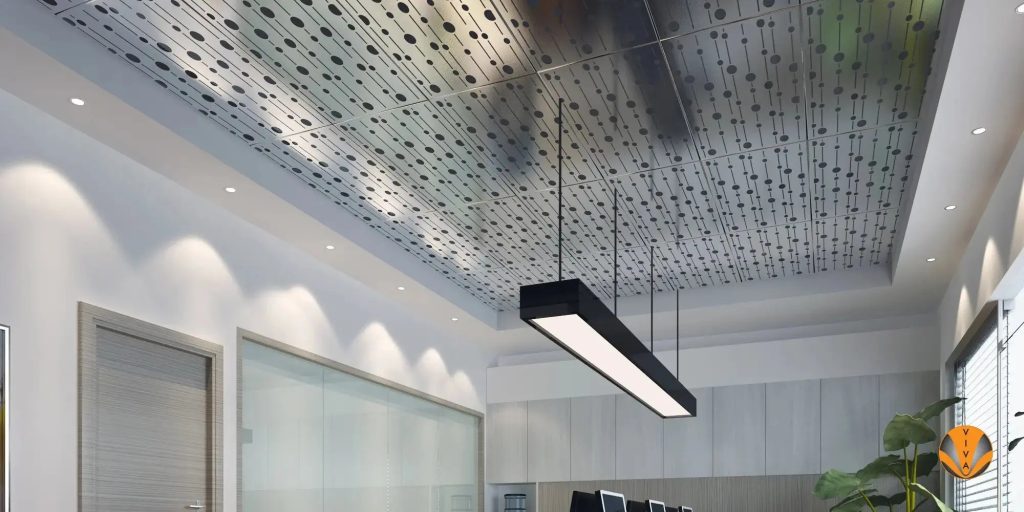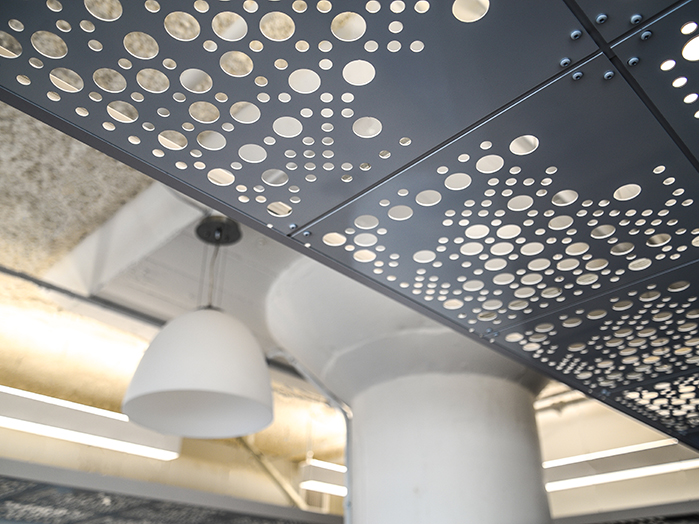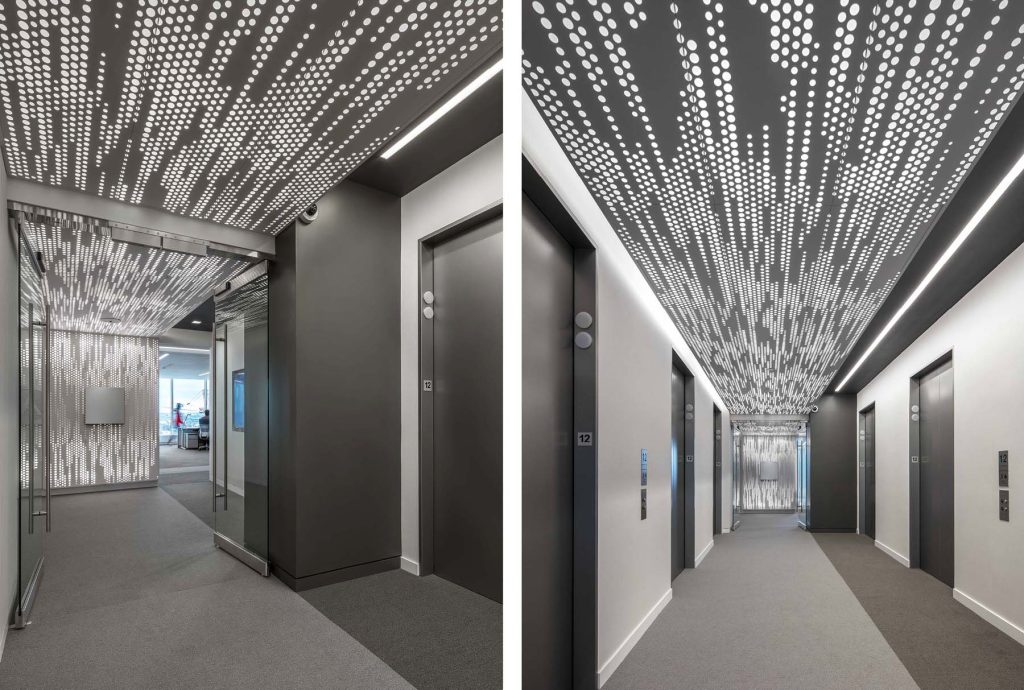Ceiling sound absorbing panels are a great way to reduce noise in a room. They are especially useful in spaces with high ceilings where sound tends to echo and reverberate. These panels are designed to absorb sound waves, which helps to reduce the amount of noise in the room and create a more comfortable environment.

There are many different types of ceiling sound absorbing panels available on the market today. Some are made from foam, while others are made from fiberglass or other materials. The type of panel you choose will depend on your specific needs and the type of room you are trying to soundproof. It is important to choose a panel that is designed to absorb the specific type of sound that is most problematic in your room, whether it be high-frequency sound or low-frequency sound.
When selecting ceiling sound absorbing panels, it is important to consider not only their sound-absorbing capabilities but also their aesthetic appeal. Many panels are designed to be visually appealing and can enhance the overall look of a room. Some panels even come in different colors and patterns, allowing you to choose a design that complements your existing decor. With the right ceiling sound absorbing panels, you can create a more peaceful and comfortable environment in your home or office.
Basics of Sound Absorption

Acoustic Principles
When sound waves hit a surface, they can either be absorbed, reflected, or transmitted through the material. The amount of sound energy absorbed by a material is known as its sound absorption coefficient. The absorption coefficient is measured on a scale of 0 to 1, with 0 indicating complete reflection and 1 indicating complete absorption.
The effectiveness of a sound-absorbing material depends on several factors, including the thickness of the material, its density, and the frequency of the sound waves. Materials with high density, such as concrete, are good at absorbing low-frequency sounds but are less effective at absorbing high-frequency sounds. On the other hand, materials with low density, such as foam, are better at absorbing high-frequency sounds but are less effective at absorbing low-frequency sounds.
Sound Absorption Coefficients
Sound absorption coefficients are typically measured using a reverberation chamber, which is a room designed to simulate a large, reflective space. The test involves measuring the amount of time it takes for sound to decay by 60 decibels (dB) after the sound source has been turned off. The sound absorption coefficient can then be calculated based on the decay time.
Various materials have different sound absorption coefficients, and it is important to choose the right material for your specific needs. For example, if you are looking to reduce the noise level in a recording studio, you would want to use materials with a high sound absorption coefficient to minimize the amount of sound reflected back into the room.
Ceiling sound-absorbing panels are an effective solution for reducing the amount of noise in a room. They are designed to absorb sound waves that would otherwise bounce off the ceiling and walls, creating echoes and reverberation. By installing sound-absorbing panels on the ceiling, you can create a more comfortable and productive environment.
Types of Ceiling Sound Absorbing Panels

If you are looking for a solution to reduce noise in a room, sound-absorbing panels are a great option to consider. These panels are designed to absorb sound waves and prevent them from bouncing off the walls and ceiling. There are different types of ceiling sound-absorbing panels available on the market, each with its own unique features and benefits. In this section, we will discuss the three most common types of sound-absorbing panels.
Fabric-Wrapped Panels
Fabric-wrapped panels are one of the most popular types of sound-absorbing panels. They are made of a wooden frame that is wrapped in a layer of sound-absorbing material, such as fiberglass or mineral wool. The frame is then covered with a layer of fabric, which can be customized to match the décor of the room. Fabric-wrapped panels are easy to install and can be mounted directly onto the ceiling or walls using clips or adhesive.
Foam Panels
Foam panels are another type of sound-absorbing panel that is commonly used in recording studios, home theaters, and other spaces where sound quality is important. These panels are made of a dense foam material that is designed to absorb sound waves. They are available in a variety of shapes and sizes, including squares, rectangles, and wedges. Foam panels are lightweight and easy to install, and can be mounted directly onto the ceiling or walls using adhesive.
Perforated Acoustic Panels
Perforated acoustic panels are a type of sound-absorbing panel that is designed to reduce noise in large spaces, such as auditoriums, concert halls, and conference rooms. These panels are made of a high-density fiberglass material that is perforated with small holes. The perforations allow sound waves to pass through the panel and into the absorbent material, which reduces the amount of noise in the room. Perforated acoustic panels are available in a variety of sizes and shapes, and can be customized to match the décor of the room.
In summary, there are different types of ceiling sound-absorbing panels available on the market, each with its own unique features and benefits. Fabric-wrapped panels, foam panels, and perforated acoustic panels are the three most common types of sound-absorbing panels. When choosing a type of panel, consider the size of the room, the amount of noise you want to reduce, and the overall décor of the space.
Installation of Sound Absorbing Panels
If you want to improve the acoustics of a room, installing sound-absorbing panels is a great option. Here are some tips to help you install them properly.
Mounting Techniques
There are several ways to mount sound-absorbing panels, depending on the type of panel you are using and the surface you are mounting them on. Here are some common mounting techniques:
- Adhesive: Use a construction adhesive to attach the panels directly to the ceiling or wall. This is a quick and easy method, but it may not be the best choice if you need to remove the panels later.
- Clips: Use clips to attach the panels to a suspended ceiling grid. This method is easy to install and allows for easy removal and reinstallation of the panels.
- Z-Clips: Use Z-clips to attach the panels directly to the wall. This method provides a secure hold and allows for easy removal and reinstallation of the panels.
- Impaling Pins: Use impaling pins to attach the panels directly to a drywall or plaster ceiling. This method provides a secure hold and allows for easy removal and reinstallation of the panels.
Tools and Materials
To install sound-absorbing panels, you will need the following tools and materials:
- Sound-absorbing panels
- Construction adhesive (if using adhesive mounting)
- Clips (if using clip mounting)
- Z-clips (if using Z-clip mounting)
- Impaling pins (if using impaling pin mounting)
- Tape measure
- Level
- Drill
- Screws
- Screwdriver
- Safety glasses
Before you begin installation, make sure you have all the necessary tools and materials. It’s also a good idea to read the manufacturer’s installation instructions carefully to ensure you are installing the panels correctly.
With these tips in mind, you can install sound-absorbing panels with confidence and improve the acoustics of your room.
Design Considerations
When selecting ceiling sound absorbing panels, there are several design considerations to keep in mind to ensure that the panels not only look great but also function effectively.
Aesthetic Choices
Firstly, consider the aesthetic choices of the space where the panels will be installed. The panels should complement the design of the room while also providing sound absorption. There are a variety of panel styles and colors available to choose from, so you can find a style that matches your room’s decor.
Another important consideration is the thickness of the panel. Thicker panels tend to absorb more sound, but they may not be the best choice for all spaces. Thicker panels can be more visually imposing, so it is important to balance sound absorption needs with aesthetic preferences.
Functional Planning
The functional planning of the space is also crucial when selecting ceiling sound absorbing panels. Consider the size of the room, the type of activities that will take place in the room, and the level of noise that will be generated. For example, a conference room may require more sound absorption than a break room.
It is also important to consider the installation process. Some panels are easier to install than others, and some may require professional installation. Make sure to choose panels that are easy to install and that do not require extensive modifications to the ceiling.
In summary, when selecting ceiling sound absorbing panels, consider the aesthetic choices of the space and the functional planning of the room. Choose panels that complement the design of the room while providing effective sound absorption. Make sure to balance sound absorption needs with aesthetic preferences and choose panels that are easy to install and that do not require extensive modifications to the ceiling.
Benefits and Limitations
Acoustic Improvement
Ceiling sound absorbing panels offer numerous benefits for acoustic improvement in various spaces. They are designed to absorb sound waves, reduce echoes, and reverberations. This results in a clearer and more balanced sound, making it easier to hear and understand speech, music, and other sounds. The panels also help to reduce noise transmission between floors, making them ideal for multi-story buildings.
Additionally, ceiling sound absorbing panels come in various shapes, sizes, and colors, allowing for customization to match the aesthetic of the space. This makes them a popular choice for recording studios, concert halls, auditoriums, and other spaces where sound quality is important.
Space Usage Constraints
While ceiling sound absorbing panels offer many benefits, they also have some limitations. One of the main limitations is space usage constraints. Ceiling panels require a certain amount of space between the ceiling and the panels to be effective. This can be a challenge in spaces with low ceilings or limited overhead space.
Another limitation is that ceiling panels may not be suitable for every space. For example, in spaces with high humidity or moisture levels, such as swimming pools or saunas, certain types of panels may not be appropriate. It is important to choose panels that are designed for the specific space and conditions they will be used in.
In summary, ceiling sound absorbing panels offer many benefits for improving acoustics in various spaces. However, they also have limitations, such as space usage constraints and suitability for certain environments. It is important to carefully consider these factors when selecting and installing ceiling sound absorbing panels.
